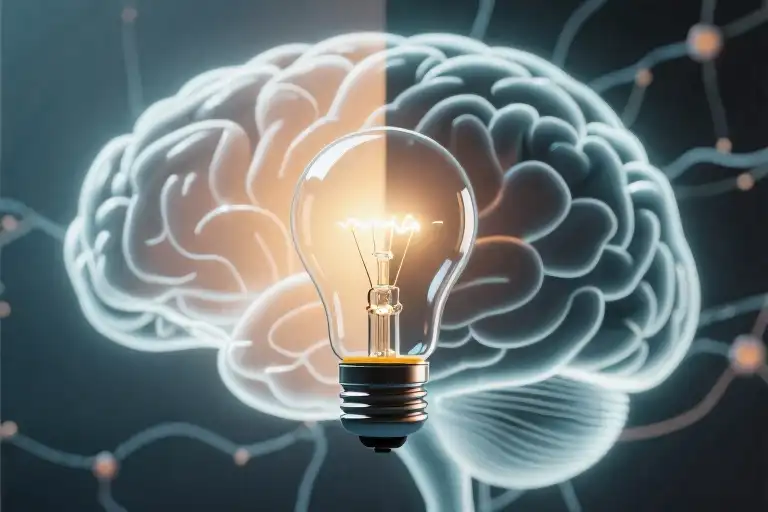The glow of your phone screen illuminates your face as you scroll through this text—a mundane act that belies the extraordinary evolutionary feat happening inside your skull. That simple ability to decode these squiggles on a digital surface represents one of humanity’s most remarkable cultural inventions, yet we rarely pause to consider its strangeness. Nearly nine out of ten people worldwide can interpret symbols like these (87% global literacy rate, according to 2022 UNESCO data), making reading feel as natural as breathing. But here’s the cognitive dissonance: unlike breathing, no human is born knowing how to read.
Your brain wasn’t designed for this task. For over 135,000 years, Homo sapiens communicated through speech, gestures, and grunts before the first writing systems emerged in Mesopotamia around 3200 BCE. That means we’ve spent less than 4% of our species’ existence engaging with written language—barely an evolutionary blink. Yet today, reading feels so instinctive that we forget it’s an acquired superpower, one that requires our neural circuitry to perform spectacular acrobatics.
This paradox raises fascinating questions: How did brains evolved for hunting and gathering adapt to decipher abstract symbols? Why did writing emerge so late in human history compared to spoken language? And what does neuroscience reveal about the mental gymnastics behind your ability to understand this sentence right now? We’ll explore these threads—starting with literacy’s deceptive familiarity, moving through its surprising historical timeline, and finally examining the brain’s remarkable plasticity that makes reading possible. Along the way, you might start noticing the subtle miracles happening every time your eyes scan a menu, a text message, or a subway sign.
Consider this your backstage pass to the neural theater where reading performs its daily magic. No wands or capes required—just three pounds of gray matter that somehow learned to turn ink patterns into ideas across millennia.
The Paradox of Literacy
That glowing rectangle in your hand right now—the one you’re effortlessly scanning for information—represents one of humanity’s most improbable achievements. Reading feels as natural as breathing to those of us among the 87% global literacy rate, yet every fluent reader is essentially performing cognitive alchemy. Our brains weren’t designed for this.
Consider the chattering parrot in your local pet store, perfectly mimicking human speech. That bird demonstrates something profound: vocal imitation exists across species, but symbolic representation remains uniquely human. The parrot can say “cracker” when hungry, but it will never leave a note for its owner. This distinction between language as biological hardware and literacy as cultural software shapes everything from classroom design to smartphone interfaces.
Neuroscience reveals why reading demands such mental gymnastics. Unlike spoken language which taps into evolutionary ancient circuits, literacy requires repurposing visual processing regions—essentially hijacking brain real estate meant for recognizing faces or predators. fMRI scans show illiterate adults who learn to read develop new neural pathways resembling tangled phone cables, their brains physically rewiring to accommodate this unnatural skill.
The implications ripple outward. Those squiggles on your coffee cup’s nutrition label represent a cognitive revolution younger than the pyramids. For perspective, if human existence were compressed into a 24-hour day, writing emerged around 11:53 PM. We spent 23 hours and 50 minutes thinking without recording, then suddenly invented systems to etch inventory lists into wet clay. The leap from oral tradition to symbolic representation changed everything—except our basic neurobiology.
Modern literacy statistics mask this biological novelty. That comforting 87% figure represents not an innate capacity but cultural tenacity—countless hours spent bending stubborn neural pathways to society’s will. Every literate person carries traces of this struggle: the child sounding out words syllable by syllable, the adult learner mouthing unfamiliar terms. What feels automatic now began as deliberate cognitive rebellion against our own wiring.
Perhaps this explains why reading fatigue feels different from physical tiredness. Your eyes don’t ache from tracking lines—they protest against the mental contortions required to transform symbols into meaning. Next time you catch yourself rereading a simple paragraph, forgive your brain. It’s attempting rocket science with Stone Age equipment, and frankly, it’s doing marvelously well.
The Great Divide Between Speech and Writing
Your ability to understand these marks on a screen is nothing short of miraculous. Consider this: while humans have been conversing for over 135,000 years, we’ve only been reading and writing for about 5,200 years. That’s like having a hundred-year lifespan where you only learn to write at age 96.
The first proper writing systems emerged in Mesopotamia around 3200 BCE, when Sumerian merchants needed to track barley shipments and temple offerings. These early cuneiform marks weren’t literature – they were accounting tools pressed into clay tablets. It took nearly two millennia before writing evolved to record poetry or laws like the Code of Hammurabi.
What’s fascinating isn’t just how late writing appeared, but what its emergence reveals about human cognition. Spoken language seems almost inevitable – every culture develops it naturally. But writing? That required specific social conditions:
- Agricultural surplus that created administrative needs
- Specialized labor allowing scribes to dedicate years to mastery
- Trade networks demanding record-keeping across distances
Neuroscientists call this the “cultural evolution” of reading – our brains didn’t evolve for literacy, but developed the capacity when civilization demanded it. The same neural plasticity that lets modern children learn emoji fluency allowed ancient scribes to invent symbolic representation.
This historical gap explains why reading feels different from speaking. When you chat with friends, words flow effortlessly. But decoding these sentences requires focused attention, activating recently repurposed brain regions. That slight effort you feel? It’s the echo of humanity’s relatively recent literacy revolution.
Perhaps most remarkably, this cognitive adaptation occurred within the blink of evolutionary time. If we compressed human existence into a single calendar year, writing wouldn’t appear until December 29th at 11:45 PM. Yet in those final moments, we transformed how knowledge travels across generations.
The Brain’s Reading Hack: How We Rewire Ourselves for Literacy
That moment when your eyes scan these words, something extraordinary happens in your brain. Not the kind of extraordinary we associate with breathing or blinking—those come preinstalled. This is more like a software update your gray matter installed through years of training. The visual word form area (VWFA), a specialized region in your left hemisphere, lights up like a pinball machine. It didn’t exist at birth.
French neuroscientist Stanislas Dehaene calls this “neuronal recycling”—the brain’s remarkable ability to repurpose existing hardware for new cultural inventions. Your VWFA originally evolved to recognize objects and faces. Now it decodes squiggles we call letters with the same automaticity. fMRI scans show illiterate adults lack this dedicated circuitry; their brains process written words like random lines. After literacy training, those same brains reorganize visibly, creating what looks like a new operating system.
The Literacy Divide in Brain Scans
Comparative studies reveal startling contrasts:
- Illiterate brains activate diffuse areas for letter recognition, as if solving a puzzle each time
- Literate brains show streamlined activation, completing the task 200ms faster
- Chinese readers engage more right hemisphere areas than alphabetic readers, reflecting the visual complexity of characters
This neural specialization comes at a cost. The same plasticity that allows reading acquisition reduces facial recognition ability—a tradeoff documented in studies of Portuguese women who became literate in adulthood. Their improved reading skills correlated with slightly diminished capacity to identify unfamiliar faces.
Writing Systems Shape Thinking
Your brain’s reading pathways differ based on what you read:
- Alphabetic systems (English, Spanish) train the brain to decompose words into phonemes
- Logographic systems (Chinese) develop holistic visual processing
- Abjads (Arabic) enhance right-to-left spatial attention
Korean provides a fascinating natural experiment. Older generations reading Hanja (Chinese characters) show different activation patterns than younger Hangul readers, despite sharing a language. This demonstrates how script properties, not just language, mold our neural architecture.
What emerges is a picture of the brain as an improvisational genius—taking ancient visual and language circuits and jury-rigging them into a reading machine. It’s not elegant design but brilliant adaptation, like using a shoe to hammer nails. The kludgy workaround becomes so seamless we forget it’s not original equipment.
The Modern Paradox of Reading
Your thumb scrolls effortlessly through a news feed, pausing just long enough to skim a headline before moving to the next dopamine hit. This ritual—repeated dozens of times daily—represents both the triumph and vulnerability of our hard-won literacy. While neuroscientists confirm our brains weren’t originally designed for reading, we’ve somehow hacked our neural circuitry to process symbols at lightning speed. Yet this very adaptability now faces unprecedented challenges in the digital age.
The Fragmentation Effect
Research from Stanford’s Perception Lab reveals disturbing patterns: the average digital reading session lasts just 26 seconds before interruption. Unlike the sustained focus required for clay tablet interpretation in ancient Sumer, modern content consumption resembles cognitive ping-pong. This fragmentation impacts more than attention spans—fMRI studies show shallow scrolling activates different neural pathways than deep reading, bypassing the visual word form area’s sophisticated decoding mechanisms.
Educators observe the consequences firsthand. “Students can quote viral tweets verbatim but struggle to trace arguments through a 10-page article,” notes Dr. Elena Rodriguez, a cognitive specialist at Columbia Teachers College. The irony? Our brains evolved reading circuits for exactly the kind of linear, immersive engagement that infinite scrolls undermine.
Rewiring Literacy Instruction
Neuroscience-informed teaching methods are fighting back with three strategic approaches:
- Multisensory Anchoring: Combining tactile letter tracing with phonemic awareness—a technique shown to strengthen neural pathways 37% faster than visual-only learning (Journal of Educational Neuroscience, 2021)
- Cognitive Stamina Building: Implementing progressive text-length exposure, mirroring athletic training principles for the reading brain
- Meta-Literacy Training: Explicitly teaching students to monitor their own comprehension depth, creating awareness of “skim vs. engage” modes
These methods leverage neuroplasticity—the same adaptive quality that originally allowed our visual cortex to repurpose itself for symbol interpretation. Chicago’s Literacy Initiative reports 22% improvement in retention scores among schools adopting such frameworks.
The Interface Frontier
As neural lace technology advances, science fiction scenarios edge toward reality. Early experiments with non-invasive brain-computer interfaces demonstrate direct symbol-to-meaning translation at 300 words per minute—triple average reading speed. But this raises provocative questions: If we develop direct semantic implants, will the visual word form area atrophy like an appendix? Could literacy become obsolete like rote memorization after calculators?
Linguist Noam Chomsky’s warning echoes: “Each medium shapes not just how we communicate, but how we think.” Perhaps the ultimate test of our neural adaptability lies ahead—not in acquiring literacy, but in deciding what aspects to preserve as technology rewires the very definition of reading.
What remains certain is this: the 5,000-year journey from cuneiform to cognitive implants confirms reading as humanity’s most transformative self-made ability. Its future evolution may depend less on our brains’ plasticity than on our wisdom in choosing which neural pathways to strengthen—and which to let fade.
The Alchemy of Reading: Our Stolen Fire
When you trace your finger across these words, you’re performing cognitive alchemy—transforming abstract symbols into meaning using neural pathways that didn’t exist in our ancestors. That receipt you scanned at the grocery store, those subtitles flashing during last night’s film, even this sentence materializing before your eyes—each represents humanity’s most audacious act of self-reinvention.
We often mistake literacy for biological inheritance when it’s actually cultural contraband. Our brains weren’t designed to decode cuneiform tablets or smartphone notifications, yet here we are, casually performing mental gymnastics that would dazzle the scribes of ancient Mesopotamia. The miracle isn’t that some people struggle with reading—it’s that any of us manage it at all.
Consider your own reading habits this week. That novel you read in bed, the work emails you skimmed, the street signs you automatically processed—each engaged different neural circuits than your great-grandparents used for the same tasks. Modern readers have essentially jury-rigged our visual cortex to serve as a linguistic decoding machine, repurposing brain regions that originally evolved to recognize predators in tall grass.
Perhaps the most humbling realization? This entire system—from Shakespearean sonnets to cereal box ingredients—rests on collective make-believe. Those marks only mean something because we’ve agreed they do. The neural real estate devoted to reading looks suspiciously like cognitive squatter’s rights, with written language occupying areas meant for facial recognition and object identification.
So the next time you effortlessly absorb a restaurant menu or text message, pause to appreciate the cognitive heist in progress. You’re not just reading—you’re participating in an ongoing evolutionary improvisation, one that transforms inky squiggles into symphonies of meaning. What other latent abilities might our brains yet discover? The answer, like all good stories, remains unwritten.
When did you last notice your brain translating symbols into sense? Keep a log for three days—you might catch your neurons mid-heist.





